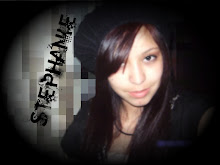For this lab we had to find out if the nine substances that we had were either acidic or basic. How we were to figure out whether the given substances were acidic or basic was by using pH tests. My predictions were the following:
*Vinegar-Acidic
*Windex-Basic
*Milk-Neutral
*Lemon Juice- Acidic
*Soda(Diet Coke)-Basic
*Tap Water-Neutral
*Bottled Water-Neutral
*Baking Soda-Acidic
*Drain Cleaner-Basic
Materials
- 27 cups
- Vinegar
- Windex
- Milk
- Lemon Juice
- Soda(Diet Coke)
- Tap Water
- Bottled Water
- Baking Soda
- Drain Cleaner
- Stirring Stick
- pH slips
- Red Litmus slips
- Blue Litmus slips
- Pencil
- Gloves
- Goggles
- Paper Towels
- Acid and Bases Lab packet
Procedure
First, Kristine chose who we were going to be working with randomly out a mug cup. Then we had to put our gloves on and goggles in order to be safe for this lab. My partner and I started off by using the pH slips in order to determine all of the substance's pH. Once we were done dipping a different pH slip for all the substances, we had to record our data in the appropriate chart that was in our lab packets. After, we rotated tables and we began working with the Litmus papers. For this part we had to dip in each a blue and a red Litmus paper for each substance and determine if it was acidic, neutral, or basic while recording our data as we went through all substances. If it was acidic, both the red and blue Litmus papers had to turn red. If it was neutral, both Litmus papers would stay in their original colors. If it was basic, both the red and blue Litmus papers would turn blue.
Later on we were given red cabbage dyed paper in which we also had to dip in and record our data in our charts. In the end, we were told to place each red cabbage dyed paper for each substance in a scale that was rated from 0-14, 0-6 being acidic,7 being neutral, and 8-14 being basic.
Observation/Data
For this lab I noticed how the pH slips, Litmus paper slips, and red cabbage dyed paper slips were changing color due to each of their individual pH. When comparing my predictions and final data I found that i was correct about 5 out of 9 substances.
Predictions & Final Results
Vinegar-Acidic; Vinegar-Acidic
Windex-Basic; Windex-Basic
Milk-Neutral; Milk-Neutral
Lemon Juice- Acidic; Lemon Juice-Acidic
Soda(Diet Coke)-Basic; Soda(Diet Coke)-Acidic
*Tap Water-Neutral; Tap Water-Neutral
*Bottled Water-Neutral; Bottled Water- Acidic
*Baking Soda-Acidic; Baking Soda-Basic
*Drain Cleaner-Basic; Drain Cleanser-Basic
Conclusion
Overall, this lab helped me understand how much easier it is to determine the pH of substances using these test slips instead of using various amounts of steps in an equation. I also learned more about substances that we used which I find important because some of the substances were liquids that we are exposed to daily.

Stephanie -
ReplyDeleteI was struck by your comment 'Overall, this lab helped me understand how much easier it is to determine the pH of substances using these test slips instead of using various amounts of steps in an equation.' I agree that using the pH paper is much easier to determine whether a substance is acidic, basic or neutral. I also noticed that you included a brief description of the color the litmus papers would turn for the three different circumstances. This is very useful to the reader as they get ready to review your results. The one piece that is missing is your actual data tables - what were your results for each of the three experiments? In the future, remember to include this section as it helps the reader better understand the summary of your results.